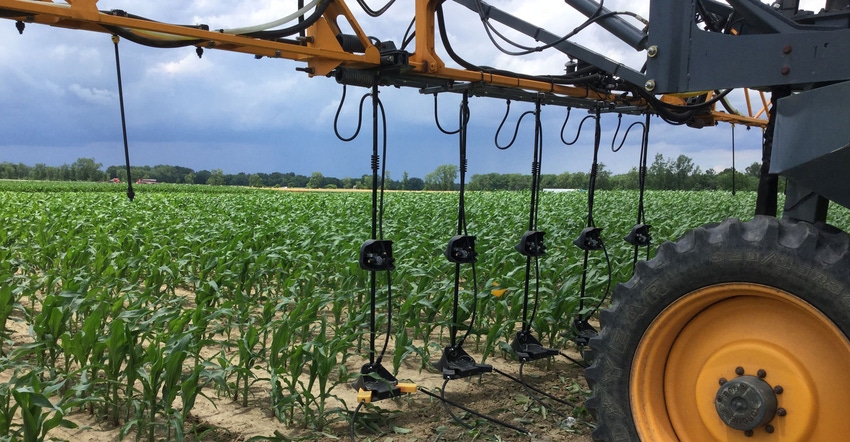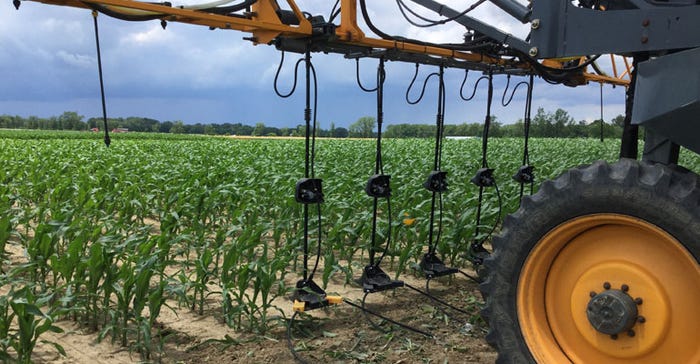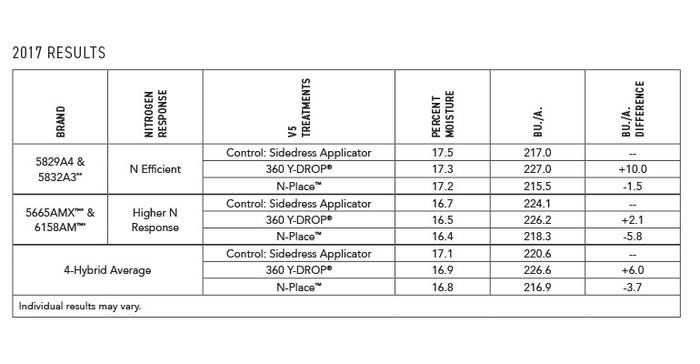June 1, 2018

Sponsored Content
As the growing season progresses, many questions farmers often find at the forefront of their minds are centered around nitrogen. “How much nitrogen will I need this season?” “When is the optimal time for nitrogen application?” And perhaps most important; “where is the best placement for my nitrogen?” While there are too many outside factors to provide just one answer, these variables are being narrowed down.
For many years, Beck’s Practical Farm Research (PFR)® program has studied nitrogen placement and the impact it has on corn. For instance, one implement has been studied for four years are Nitrogen Sealers by Nitrogen Sealing Systems. This double rolling coulter system covers the slot made by the injection knife with soil and thereby prevents the volatilization of nitrogen. By preventing the volatilization of nitrogen, the system stops the nitrogen from turning into ammonia gas and ultimately being lost to the atmosphere. Across four years, Beck’s PFR team observed an average yield increase of 4.7 Bu./A with the use of nitrogen sealers. However, in years with wetter conditions that promoted volatilization due to warm, moist soils, average yield gains were closer to 10 Bu./A. To see the full results from this study, click here. At the end of 2016, this practice was designated as PFR Proven™.
Beck’s PFR also tested another implement, the 360 Y-DROP. The system features a sprayer attachment that places nitrogen at the base of the corn plant when applying mid-season. When these attachments are placed on a high clearance sprayer, farmers can apply nitrogen later into the season. This implement allows for more nitrogen to be applied when the plant needs it the most, which can lead to less nitrogen loss.

Based on averages across two years and testing on multiple hybrids, Beck’s PFR suggests that applying nitrogen closer to the plant does in fact help with nitrogen uptake. Two-year data has shown an average yield increase of 5.8 Bu./A. with the 360 Y-DROP system.

In addition to the placement of side dress nitrogen, Beck’s agronomists continue to test the placement of nitrogen at planting. This testing utilizes the traditional 2x2 system versus some of the newer dual 2x2 systems on the market. Look for these results and more in the 2018 PFR Book!
As you prepare to apply nitrogen this season, keep in mind how these implements and others can benefit your operation. For more information or to see regional results of these studies, click the links below.
Beck’s PFR is the largest source of unbiased, cutting-edge agronomic information in the industry. More than 500 studies were conducted in 2017, comparing over 150 products across multiple locations to learn how different management practices and new technologies perform in field environments. In evaluating agronomic practices and input products, not comparing seed products, Beck’s PFR aims to help farmers maximize their input dollars and increase their bottom line. To view more PFR studies click here.
Practical Farm Research (PFR)® and PFR Proven™ are trademarks of Beck’s Superior Hybrids, Inc. PFR Proven™ was developed in 2016 to identify the products and practices that are likely to be most profitable. If a product has been tested in PFR and found to provide yield gains and averages a positive ROI over a minimum of three years, then that product will earn the status of PFR Proven and should be something to consider trying on your farm. If a practices has been tested in PFR and found to be the most profitable, then it will also receive the status of PFR Proven. Please consult with your local Beck’s representative or trusted advisor for best management practices in your area.
About the Author(s)
You May Also Like




